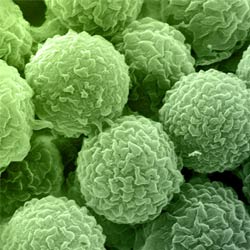- Potential health effects and symptoms associated with mold exposures include allergic reactions, asthma, and other respiratory complaints.
- There is no practical way to eliminate all mold and mold spores in the indoor environment; the way to control indoor mold growth is to control moisture.
- If mold is a problem in your home or school, you must clean up the mold and eliminate sources of moisture.
- Fix the source of the water problems or leak to prevent mold growth.
- Reduce indoor humidity (30-60%) to decrease the chances of mold growth. This can me done by venting bathrooms, dryers, and other moisture generating sources to the outside; using air conditioners and dehumidifiers; increasing ventilation; and using exhaust fans whenever cooking, dishwashing, and cleaning.
- Clean mold from hard surfaces with water and detergent, and dry completely. Absorbent materials such as ceiling tiles that are moldy may need to be replaced.
- Prevent condensation: Reduce the potential for condensation on cold surfaces (windows, piping, exterior walls, roof, or floors) by adding insulation.
- In areas where there is a perpetual moisture problem (by drinking fountains, by classroom sinks, or on concrete floors with leaks or frequent condensation), do not install carpeting.
- Molds can be found almost anywhere; they can grow on virtually any substance, providing moisture is present. There are molds that can grow on wood, paper, carpet, and foods.
Nine things to know about mold

